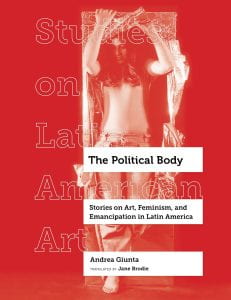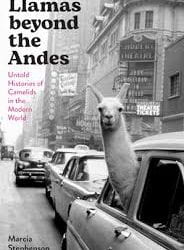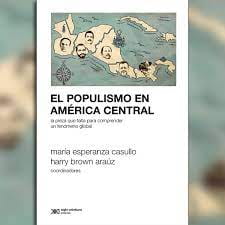A Review of The Political Body: Stories on Art, Feminism, and Emancipation in Latin America
Back in 2013 when I started the research for Dissident Practices: Brazilian Women Artists 1960s-2020s (Duke University Press, 2023), I encountered a strong resistance to the term “feminism” among women artists from the 1960s and 1970s. It became clear to me that this was a thorny subject, and that it would take much time and effort to navigate the intricacies of the topic.
The motivation to continue pursuing my research came a few years later, when I had the privilege to be invited by Andrea Giunta and Cecilia Fajardo-Hill (later, 2021-22 DRCLAS Visiting Scholar) to brainstorm for the exhibition Radical Women: Latin American Art, 1960-1985, at the Hammer Museum, Los Angeles (2017) (The exhibition later traveled to the Brooklyn Museum, New York, and Pinacoteca de São Paulo, 2017-18). During this initial workshop, I learned that Giunta’s and Fajardo-Hill’s proposal for the Radical Women exhibition had also been met with considerable opposition to the term “feminism.” In her new book The Political Body: Stories on Art, Feminism, and Emancipation in Latin America (University of California Press, 2023), Giunta states that “the initial feedback was ironic, even dismissive” (9).
Later on, I was invited to participate in the symposium they organized in conjunction with the opening of the exhibit of Radical Women in 2017. The initial workshop, symposium, and groundbreaking exhibition reinforced my determination to continue my own exploration of the subject. Six year later, I was excited to learn that Giunta’s The Political Body was being released at the same time as my own book on Brazilian women artists. The timing was not only a felicitous coincidence, but moreover, in many ways the two books overlap and complement each other by telling a compelling history about the unique position of Latin America women artists.
The Political Body: Stories on Art, Feminism, and Emancipation in Latin America by Andrea Giunta (University of California Press, 2023, 304 pages)
The book offers a compelling analysis of how art has been used as a powerful tool for social and political change in the region. Informed by the extensive research conducted by Giunta and Fajardo-Hill for the exhibition Radical Women, it explores the intersection of art, politics and gender in Latin America. Giunta focuses on how a constellation of women artists explored the body as a political site for social change and symbolic emancipation from dictatorships, censorship, racism, patriarchy and marginalization.
Giunta addresses the question of why there was so much resistance to feminist activism by Latin American women artists in the 1960s and 1970s. She argues this refusal was partially due to the fact that the leftist political movements saw feminism as an agent against the common struggle for the revolution and the violent repression by the dictatorships. Feminism was met with suspicion by number of leftist organizations, since for the Left, the women’s movement was considered a threat to the unity of the working class. Other contributing factors to the refusal of feminism were the opposition of the Catholic Church, state institutions, military regimes and the association of feminism with the United States—conflated with U.S. support of Latin American dictatorships, especially through the CIA-backed Operation Condor.
The Political Body is organized through case studies of a select group of artists from Argentina, Chile, Uruguay, Brazil, Colombia and Mexico, mostly working under the dictatorships that ruled their countries, from the 1960s through the 1990s. Their works involve an array of media such as paintings, films, photographs, archives, magazines, installations, multimedia art and performances. Giunta does not pretend to provide a comprehensive history of women’s art in the region, but rather intends to bring to light key practices of social resistance from the perspective of a collection of Latin American women artists. She sets herself the task of examining how these artists responded and challenged specific problems they faced under dire circumstances. Throughout the eight chapters, Giunta analyzes how they engaged with different strategies such as political activism, feminism, representation, archival materials and memory to navigate the politics of the time. Each case study is analyzed with insightful analysis, close readings of the artworks and engaging narrative.
The first chapter addresses statistics and testimonies dealing with the lack of representativity of female artists both internationally and in the local Argentinean scene. It also distinguishes feminism from feminine, arguing that not all works by women artists are not necessarily feminist, and even if an artist does not identify as feminist, a work of art can be read through gender lens. Giunta singles out artists who do not consider themselves feminists, though they incorporate a feminine aesthetics questioning women’s established and expected roles in society. Chapter 2 explores the convoluted relationship between feminism and leftist politics. It focuses on paintings by Colombian artist Clemencia Lucena from the late sixties and seventies and feminist films by Argentine María Luisa Bemberg also from the seventies. Despite not having been in contact with each other, the two artists endured antagonistic views of leftist Marxist politics towards feminism in their respective native countries. In this chapter, Giunta analyzes how Lucena and Bemberg found different ways to face this problematic relationship.
The third chapter discusses the experimental films of Narcisa Hirsch, a German-born Argentine artist working in the 1960s and 1970s mainly in Buenos Aires. Giunta demonstrates how biographical aspects of Hirsch’s subjective experiences are intertwined with the artist’s choice to express herself through intimate photographs and experimental films. For Hirsch, the personal was political.
The fourth chapter deals with an exceptionally atypical context in Latin America: the overtly feminist Mexican artistic scene starting in the mid-1970s. At the time, there were no parallels to the Mexican artists’ engagement to feminist activism in other countries in Latin America. Giunta attributes this to the fact that Mexico, unlike so many other countries in the region, was not under a dictatorship in the sixties and seventies, so women artists there did not have to confront the adversities that their colleagues had to endure in the rest of the region.
The fifth chapter analyzes the multi-media installation Sal-si-puedes (1983) by Uruguayan artist Nelbia Romero. Made during the country’s dictatorship, Romero’s installation addresses the massacre of Indigenous people and the government’s long history of denial of it. Giunta delves into the concepts of memory, violence and resistance to explore the connection between the constitution of the modern state and the extermination of Indigenous groups in Uruguay.
Chapter 6 examines the compelling work of Chilean photographer Paz Errázuriz during the country’s excruciating early years of the military regime under General Augusto Pinochet (1973-1990). Giunta analyzes the moving images of marginal subjects taken by Errázuriz, including photographs of homeless people, inmates from a psychiatric hospital, transvestites and prostitutes in brothels, creating an amalgam of images that despite their rawness and sense of desolation, are a testimony of love, empathy and affect.
Chapter 7 focuses on the contemporary Brazilian artist Rosana Paulino, who entered the art scene in the 1990s addressing the intersectionality of class, race and gender. Giunta states, “recent transformations in curatorial criteria, spearhead at museums like the Pinacoteca do Estado de São Paulo and the Museu de Arte de São Paulo, are deeply committed to exploring Black art and art by women in what I consider is the most significant recent transformation at the art field anywhere in Latin America.” (16).
Chapter 8 gives an account of the state of the arts in the present moment, when feminism became significantly articulated in the Argentinean art scene. It discusses the latest feminist activism that recently occupied the streets of Buenos Aires against femicide and transvesticide, among other demands including pro-abortion rights. These protests also took place on social media, museums, and art institutions, exposing the patriarchal structures that are still in place.
Giunta’s writing style is engaging and accessible, making complex theoretical concepts and art historical analyses approachable to a wide audience. The strength of the book lies in the vast research done by Giunta into the different practices adopted by women artists throughout different countries in the region. It is important to notice that the artists addressed in the book are not there representing their native countries but rather embodying varied strategies to navigate the intricate intersection of art, feminism and politics. Through Giunta’s in-depth investigation, it is possible to compare and contrast some of the different approaches and positions assumed by these women artists. While Clemencia Lucena yielded to the pressure to conform her artistic practice to the Leftist demands of the time in her native Colombia, under similar circumstances, Argentine María Luisa Bemberg continued engaging her feminist views in her films. Although German-born Argentine artist Narcisa Hirsch did not identify as feminist, her work can still be read under gender lens. Uruguayan Nelbia Romero openly dealt with historiography and iconography related to the massacre of Indigenous populations under the country’s dictatorship, while Chilean Paz Errázuriz circumvented the brutal military regime under Pinochet, referring indirectly to its violence through images of marginal groups in society. Where we might see hopelessness in her photographs, Errázuriz shows acts of love as acts of resistance. Mexican artists stood out from their Latin American peers as they engaged in overtly feminist practices since the 1970s. Brazilian artist Rosana Paulino disrupted the status quo of Latin American women artists, who had overwhelmingly came from the privileged white middle- and upper- classes.
The Political Body ends by describing the feminist activism that has taken place in Argentina in the last years and its demands for women’s rights and the inclusion of female artists in the art circuit. It reminds us that while much has already been done, so much more still needs to be accomplished to bring visibility and gender equality to Latin American women artists within an imbalanced system of power.
Claudia Calirman is Associate Professor of Art History at John Jay College of Criminal Justice, CUNY, New York, and Chair of the Department of Art and Music. She is the author of Dissident Practices: Brazilian Women Artists, 1960s-2020s (Duke University Press, 2023) and Brazilian Art under Dictatorship: Antonio Manuel, Artur Barrio, and Cildo Meireles (Duke University Press, 2012).
Related Articles
A Review of Llamas beyond the Andes: Untold Histories of Camelids in the Modern World
Marcia Stephenson’s Llamas beyond the Andes is about humans making use of another animal. With a dustjacket image of Llinda Llee Llama riding in the back of an automobile in mid-20th-century Times Square, this book illustrates how sentient nature has been engulfed by human cultural objectives since Columbus’ arrival in the Americas and the rise of Europe’s global imperial ventures. The window on all this is American camelids: llamas, alpacas and their wild relations, guanacos and vicuñas.
A Review of Born in Blood and Fire
The fourth edition of Born in Blood and Fire is a concise yet comprehensive account of the intriguing history of Latin America and will be followed this year by a fifth edition.
A Review of El populismo en América Latina. La pieza que falta para comprender un fenómeno global
In 1946, during a campaign event in Argentina, then-candidate for president Juan Domingo Perón formulated a slogan, “Braden or Perón,” with which he could effectively discredit his opponents and position himself as a defender of national dignity against a foreign power.




